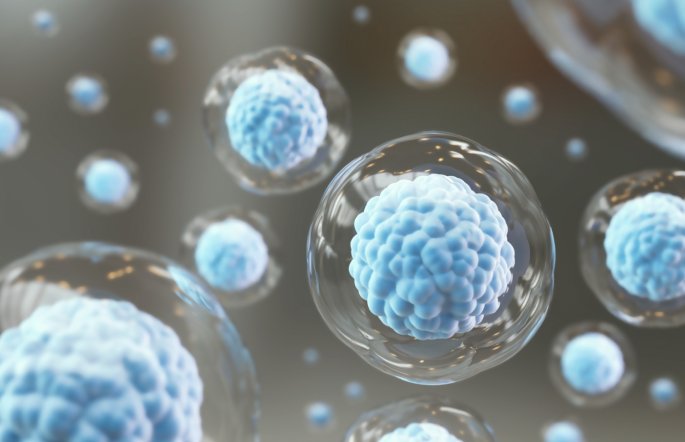Understanding NMN and NAD+
Nicotinamide Mononucleotide (NMN): NMN is a molecule that plays a crucial role in the production of NAD+. NAD+ is a coenzyme involved in various cellular processes, including energy metabolism, DNA repair, and signaling pathways. As we age, NAD+ levels tend to decline, and this decline is associated with cellular dysfunction and the ageing process.
The Key Mechanisms of NMN in Cellular Ageing
1. NMN as a Precursor to NAD+:
One of the primary mechanisms through which NMN impacts cellular ageing is its role as a precursor to NAD+. NAD+ is a coenzyme that plays a central role in cellular energy production. The decline in NAD+ levels with age has been linked to a decrease in mitochondrial function, impaired DNA repair, and altered cellular signaling.
NMN is efficiently converted into NAD+ within cells. By replenishing NAD+ levels, NMN supports the activity of various enzymes and proteins involved in critical cellular functions. This includes enzymes such as sirtuins, which play a pivotal role in regulating cellular processes associated with longevity.
2. DNA Repair and Genomic Stability:
DNA damage is a natural consequence of cellular processes and environmental exposures. Efficient DNA repair mechanisms are crucial for maintaining genomic stability and preventing the accumulation of mutations, which can contribute to ageing and age-related diseases.
NMN’s involvement in the NAD+ salvage pathway enhances the activity of enzymes such as PARP (Poly-ADP ribose polymerase) and SIRT1, both of which are involved in DNA repair. PARP is crucial for repairing single-strand DNA breaks, while SIRT1 plays a role in double-strand break repair and maintenance of genomic stability.
Research studies have demonstrated that NMN supplementation can enhance DNA repair capacity, providing a protective effect against the accumulation of DNA damage associated with ageing.
3. Sirtuin Activation and Cellular Regulation:
Sirtuins are a family of proteins that play a key role in cellular regulation, influencing processes such as gene expression, metabolism, and stress response. SIRT1, in particular, has been extensively studied for its potential role in promoting longevity.
NMN supports sirtuin activation indirectly by elevating NAD+ levels. Sirtuins are NAD+-dependent deacetylases, meaning they require NAD+ as a substrate to carry out their enzymatic activities. When NAD+ levels are boosted by NMN, sirtuins become more active, influencing various cellular pathways.
Key Functions of Sirtuins:
Gene Expression Regulation: Sirtuins can deacetylate histones, proteins that help package DNA into a compact structure. This deacetylation influences gene expression patterns and cellular responses.
Metabolic Regulation: SIRT1, in particular, is involved in the regulation of metabolism. It can modulate the activity of proteins like PGC-1α, which controls mitochondrial biogenesis and energy metabolism.
Stress Response: Sirtuins play a role in cellular stress response pathways, promoting resilience against oxidative stress, inflammation, and other stressors.
4. Mitochondrial Function and Energy Production:
Mitochondria are often referred to as the powerhouses of the cell, as they are responsible for generating the majority of cellular energy in the form of adenosine triphosphate (ATP). Declining mitochondrial function is a hallmark of ageing, contributing to reduced energy production and cellular vitality.
NMN’s impact on mitochondrial function is multifaceted:
ATP Production: By supporting NAD+ levels, NMN enhances the efficiency of oxidative phosphorylation, the process by which mitochondria generate ATP. This contributes to increased cellular energy production.
Mitochondrial Biogenesis: NMN has been shown to stimulate mitochondrial biogenesis, the process of creating new mitochondria. This results in an increased mitochondrial mass, which can enhance cellular energy output.
Oxidative Stress Reduction: Healthy mitochondria produce reactive oxygen species (ROS) as byproducts. Excessive ROS can contribute to oxidative stress and cellular damage. NMN, by supporting mitochondrial function, may help mitigate oxidative stress.
Scientific Evidence Supporting NMN’s Anti-Aging Effects
Aging-Related Mitochondrial Dysfunction:
A study published in the journal Cell Metabolism in 2016 investigated the effects of NMN supplementation on aging-related mitochondrial dysfunction in mice. The study found that NMN improved mitochondrial function and reversed certain aspects of age-related decline in muscle strength and exercise capacity.
DNA Repair and Genomic Stability:
Research published in the journal Science in 2009 demonstrated that NMN supplementation could enhance DNA repair in cells by activating the NAD+-dependent enzyme PARP-1. The study suggested that NMN may contribute to maintaining genomic stability.
Sirtuin Activation and Longevity:
Studies on sirtuins and longevity, including those involving NMN, have been featured in journals such as Nature and Cell. While not all studies have shown consistent results, there is evidence suggesting that sirtuin activation, facilitated by NMN, may contribute to increased lifespan in various organisms.
Practical Considerations for NMN Supplementation
Dosage: Determining the optimal NMN dosage can vary from person to person. Studies have used a range of dosages, and it’s essential to start with lower doses and gradually increase while monitoring for any adverse effects.
Form of NMN: NMN supplements are available in various forms, including capsules, powders, and sublingual tablets. Consider your preferences and convenience when selecting a form. Sublingual tablets, which dissolve under the tongue, may offer faster absorption.
Consistency: Consistency in NMN supplementation is key to experiencing potential benefits. Establish a routine that works for you and adhere to it regularly.
Conclusion
Nicotinamide Mononucleotide (NMN) holds promise as a supplement that can impact the aging process at the cellular level. By influencing DNA repair, sirtuin activation, and mitochondrial function, NMN has the potential to promote longevity and cellular vitality. Scientific studies, although ongoing, provide insights into the mechanisms through which NMN exerts its anti-aging effects.
As with any supplement, it’s crucial to approach NMN supplementation with caution and, if necessary, under the guidance of healthcare professionals. The journey towards healthy aging involves a holistic approach, encompassing lifestyle factors, nutrition, exercise, and the careful consideration of supplements like NMN that may contribute to the quest for longevity and well-being.

